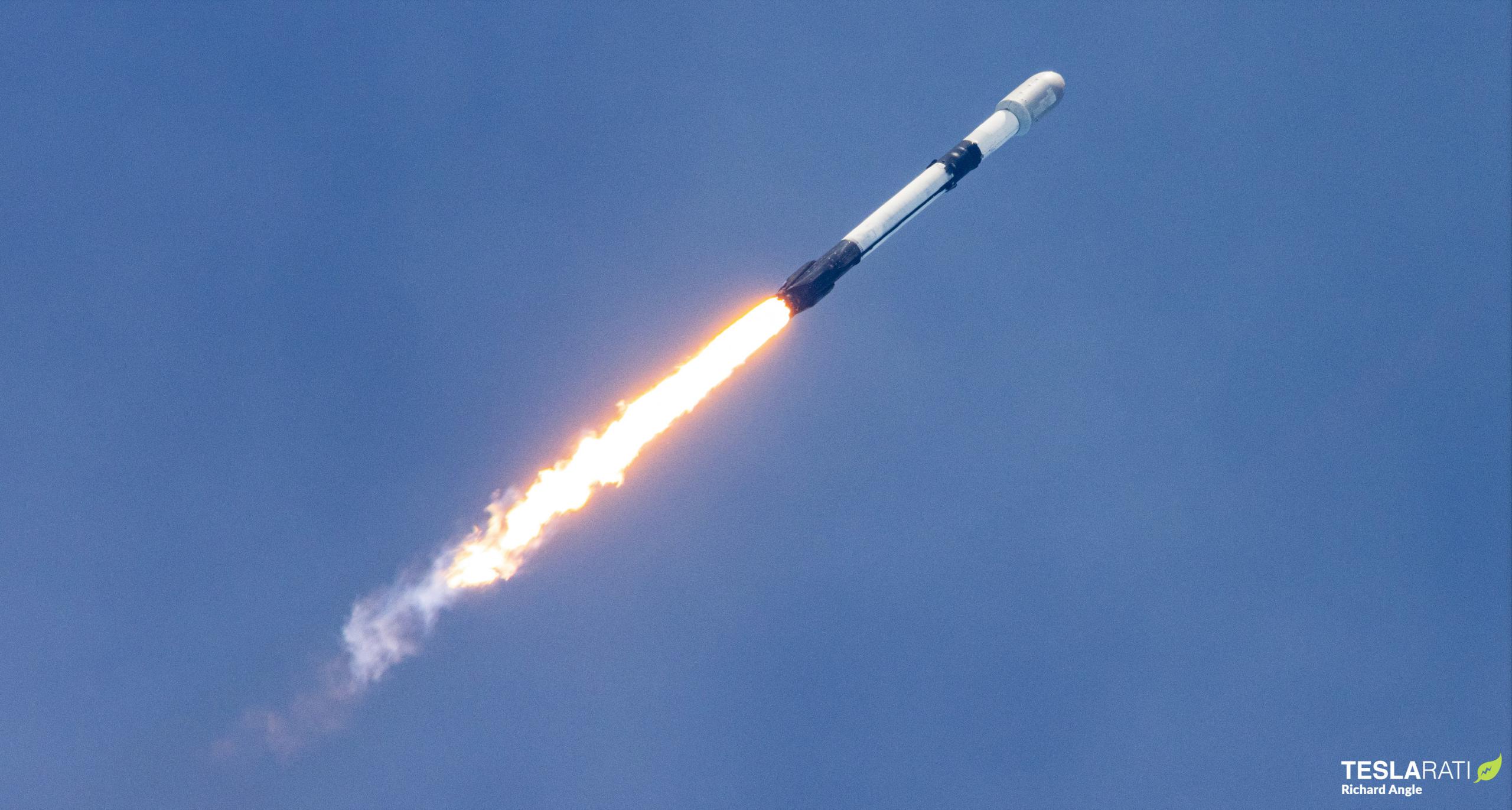

News
SpaceX delivers 59 spacecraft to orbit on fifth flawless rideshare launch
Update: After a slight eight-minute delay, SpaceX has successfully launched its fifth dedicated ‘Transporter’ rideshare mission, carrying 59 different spacecraft into a sun-synchronous orbit (SSO).
Following the Falcon 9 upper stage’s initial deployment of 39 different spacecraft, two of the deployed spacecraft will deploy another 20 or so small satellites over the next several weeks. Around an hour and a half after liftoff, SpaceX finally announced that the final Transporter-5 payload deployment was complete, confirming that the mission was a total success.
Falcon 9 booster B1061 performed as expected, acing its second Transporter launch in a row and eighth launch and landing overall since November 2020. Transporter-5 was SpaceX’s fifth launch this month and 22nd launch this year, representing an average of one launch every 6.5 days since the start of 2022. If SpaceX is able to complete four launches in June, it will be exactly half of the way to achieving 52 launches – an average of one launch per week – in a single calendar year.
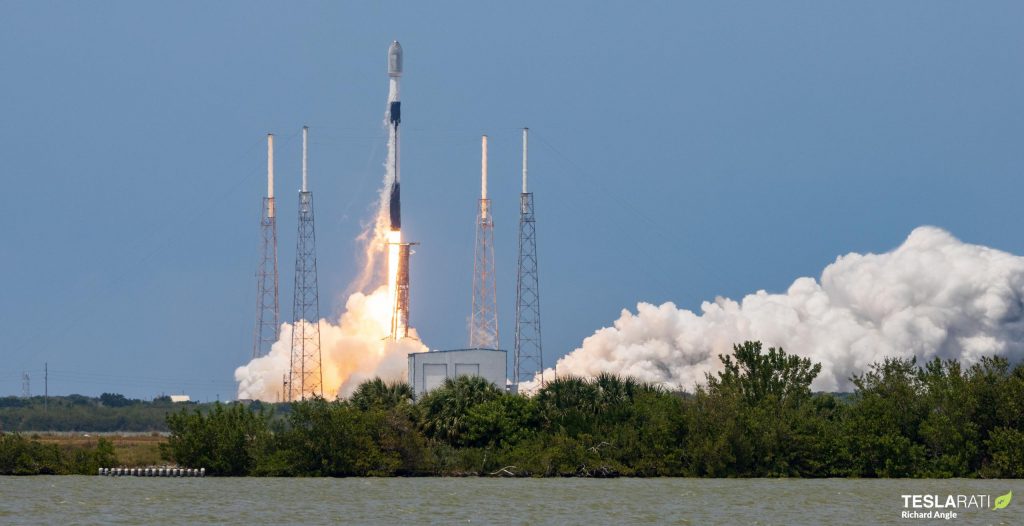
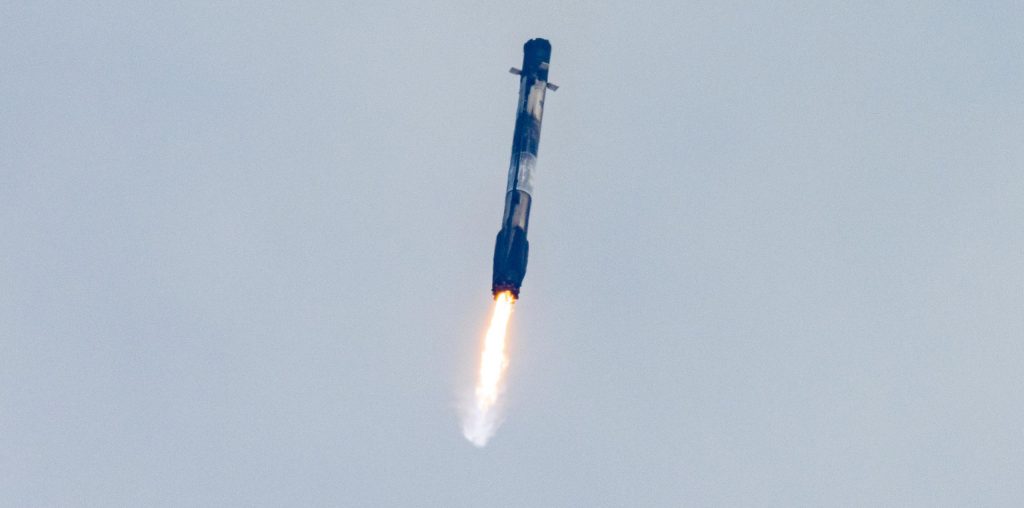
SpaceX appears to be on track to launch its fifth dedicated Falcon 9 rideshare mission as early as 2:27 pm EDT (18:27 UTC) on Wednesday, May 25th, carrying a wide variety of interesting payloads into Earth orbit.
SpaceX has reportedly assigned Falcon 9 B1061 to the mission and Transporter-5 will be its eight launch and landing attempt since November 2020 and third launch this year. While of no particular consequence, B1061 will also become the first Falcon 9 booster to launch two Transporter missions back to back after supporting Transporter-4 less than two months ago. Falcon 9 is scheduled to lift off from SpaceX’s Cape Canaveral Space Force Station (CCSFS) LC-40 facilities and boost the Transporter-5 payload and upper stage most of the way out of the atmosphere, while the booster will return back to the Florida coast to land on a concrete pad just a few miles to the south.
Like Transporter-4, which launched with just 40 deployable payloads on April 1st, Transporter-5 appears to be another very small rideshare mission relative to SpaceX’s first three Transporter launches, demonstrating the company’s continued commitment to operating the service a bit like public transit. A public bus will still happily carry just a single passenger – efficiency, while important, comes second to dependability. For many of SpaceX’s individual Smallsat Program customers, that may help to alleviate some of the downsides of massive multi-dozen-satellite rideshares, which can often make individual customers feel forgotten and unimportant when they’re forced to swallow delays caused by payloads other than their own.
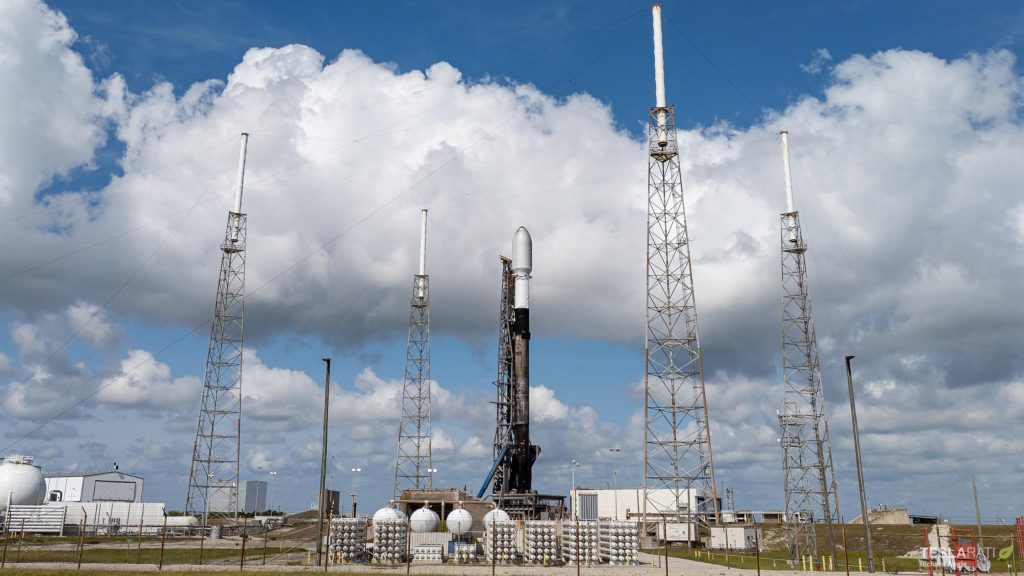
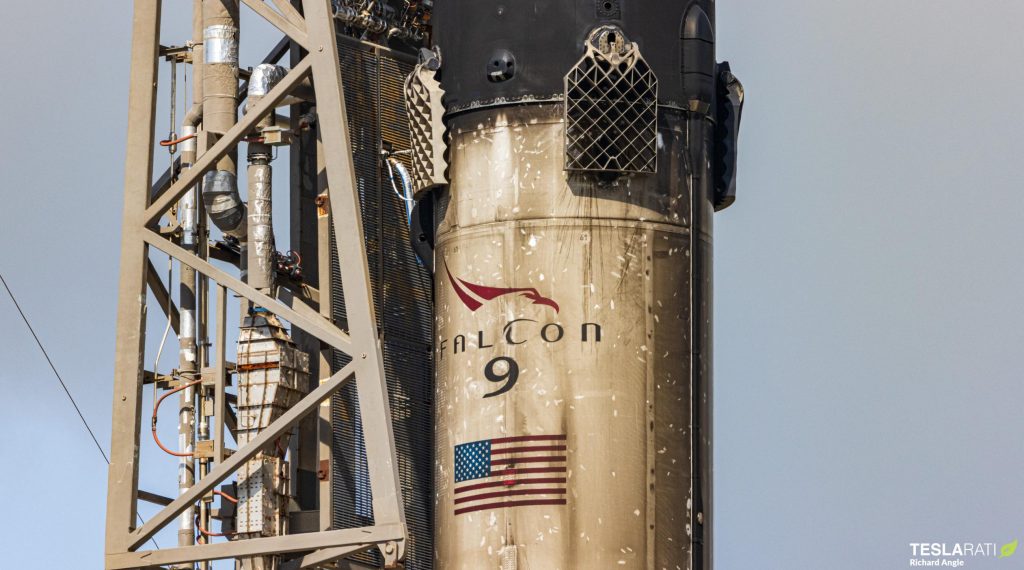
Based on official information provided by SpaceX on May 24th, Falcon 9 is scheduled to deploy only 39 payloads during Transporter-5. However, the real number of satellites deployed during the mission will likely be a bit higher due to the presence of three or four different vehicles that are designed to host or carry some of those payloads to different orbits. Spaceflight’s ‘Sherpa-AC1’ won’t have significant propulsion but it will carry several hosted payloads (‘hosted’ in the sense that the payload is not a free-flying satellite of its own) after deploying from Falcon 9.
The other two or three are true orbital transfer vehicles (OTVs), meaning that they have some kind of propulsion and are designed to deploy smaller satellites in customized orbits. The ultimate goal of the many startups trying to develop high-performance OTVs is to extract the best of both worlds from large rideshare missions and small rockets, combining ultra-cheap prices and orbits that are heavily optimized for each payload. Transporter-5 may carry Exolaunch’s “Reliant” OTV (unconfirmed) but is definitively scheduled to launch with D-Orbit’s “ION SCV-006” OTV and startup Momentus Space’s first ‘Vigoride’ OTV. Vigoride carries the unique distinction of being propelled by a first-of-its-kind “microwave electrothermal thruster” that turns water into a superheated plasma propellant.
Vigoride’s first true launch will be treated mainly as a test flight but it will also carry up to eight different small satellites. D-Orbit’s ION OTV only has one confirmed satellite on its manifest but will likely launch with at least a few more. All told, the number of satellites deployed as a result of Transporter-5 will likely be closer to 50 – a decent improvement over Transporter-4.
Several of those 50 or so payloads are particularly intriguing. Momentus Space’s first Vigoride OTV, if successful, could pave the way for the most capable commercial space tug currently available, with up to 2000 meters per second of delta V (dV) – a way to measure the stamina of rocket propulsion. NASA has also manifested its small Terabyte InfraRed Delivery (TBIRD) technology demonstrater satellite on Transporter-5 and will attempt to prove that it’s possible to use small, high-power lasers as extremely high-bandwidth downlinks. NASA hopes the tiny satellite will be able to transmit at up to 200 gigabits per second (Gbps), allowing it to downlink terabytes of data during a single pass over an Earth-based ground station.
AISTECH Space will launch an Earth observation satellite prototype outfitted with a first-of-its-kind high-resolution thermal imager. Last but certainly not least, Nanoracks and Maxar are scheduled to launch the first of multiple planned demonstrations and technology maturation missions for in-space manufacturing and construction technologies. The hosted payload is relatively simple by many measures and will only operate for about an hour, but it aims to demonstrate the first structural metal cutting in space.
Parent company Voyager Space ultimately wants to use the expertise it gains from the ‘Outpost Program’ to convert expended rocket upper stages into orbital ‘Outposts’ that will host customer payloads and support the continued development of in-space harvesting, recycling, construction, and more.
As of 5 am EDT (09:00 UTC), SpaceX still hasn’t officially confirmed via Tweet or website update that Transporter-5 is ‘go’ for launch. If it is, an official webcast available here will likely begin around 2:10 pm EDT (18:10 UTC).
Elon Musk
Tesla reveals it is using AI to make factories more sustainable: here’s how
Tesla is using AI in its Gigafactory Nevada factory to improve HVAC efficiency.

Tesla has revealed in its Extended Impact Report for 2024 that it is using Artificial Intelligence (AI) to enable its factories to be more sustainable. One example it used was its achievement of managing “the majority of the HVAC infrastructure at Gigafactory Nevada is now AI-controlled” last year.
In a commitment to becoming more efficient and making its production as eco-friendly as possible, Tesla has been working for years to find solutions to reduce energy consumption in its factories.
For example, in 2023, Tesla implemented optimization controls in the plastics and paint shops located at Gigafactory Texas, which increased the efficiency of natural gas consumption. Tesla plans to phase out natural gas use across its factories eventually, but for now, it prioritizes work to reduce emissions from that energy source specifically.
It also uses Hygrometric Control Logic for Air Handling Units at Giafactory Berlin, resulting in 17,000 MWh in energy savings each year. At Gigafactory Nevada, Tesla saves 9.5 GWh of energy through the use of N-Methylpyrrolidone refineries when extracting critical raw material.
Perhaps the most interesting way Tesla is conserving energy is through the use of AI at Gigafactory Nevada, as it describes its use of AI to reduce energy demand:
“In 2023, AI Control for HVAC was expanded from Nevada and Texas to now include our Berlin-Brandenburg and Fremont factories. AI Control policy enables HVAC systems within each factory to work together to process sensor data, model factory dynamics, and apply control actions that safely minimize the energy required to support production. In 2024, this system achieved two milestones: the majority of HVAC infrastructure at Gigafactory Nevada is now AI-controlled, reducing fan and thermal energy demand; and the AI algorithm was extended to manage entire chiller plants, creating a closed-loop control system that optimizes both chilled water consumption and the energy required for its generation, all while maintaining factory conditions.”
Tesla utilizes AI Control “primarily on systems that heat or cool critical factory production spaces and equipment.” AI Control communicates with the preexisting standard control logic of each system, and any issues can be resolved by quickly reverting back to standard control. There were none in 2024.
Tesla says that it is utilizing AI to drive impact at its factories, and it has proven to be a valuable tool in reducing energy consumption at one of its facilities.
Elon Musk
Tesla analysts believe Musk and Trump feud will pass
Tesla CEO Elon Musk and U.S. President Donald Trump’s feud shall pass, several bulls say.

Tesla analysts are breaking down the current feud between CEO Elon Musk and U.S. President Donald Trump, as the two continue to disagree on the “Big Beautiful Bill” and its impact on the country’s national debt.
Musk, who headed the Department of Government Efficiency (DOGE) under the Trump Administration, left his post in May. Soon thereafter, he and President Trump entered a very public and verbal disagreement, where things turned sour. They reconciled to an extent, and things seemed to be in the past.
However, the second disagreement between the two started on Monday, as Musk continued to push back on the “Big Beautiful Bill” that the Trump administration is attempting to sign into law. It would, by Musk’s estimation, increase spending and reverse the work DOGE did to trim the deficit.
Every member of Congress who campaigned on reducing government spending and then immediately voted for the biggest debt increase in history should hang their head in shame!
And they will lose their primary next year if it is the last thing I do on this Earth.
— Elon Musk (@elonmusk) June 30, 2025
President Trump has hinted that DOGE could be “the monster” that “eats Elon,” threatening to end the subsidies that SpaceX and Tesla receive. Musk has not been opposed to ending government subsidies for companies, including his own, as long as they are all abolished.
How Tesla could benefit from the ‘Big Beautiful Bill’ that axes EV subsidies
Despite this contentious back-and-forth between the two, analysts are sharing their opinions now, and a few of the more bullish Tesla observers are convinced that this feud will pass, Trump and Musk will resolve their differences as they have before, and things will return to normal.
ARK Invest’s Cathie Wood said this morning that the feud between Musk and Trump is another example of “this too shall pass:”
BREAKING: CATHIE WOOD SAYS — ELON AND TRUMP FEUD “WILL PASS” 👀 $TSLA
She remains bullish ! pic.twitter.com/w5rW2gfCkx
— TheSonOfWalkley (@TheSonOfWalkley) July 1, 2025
Additionally, Wedbush’s Dan Ives, in a note to investors this morning, said that the situation “will settle:”
“We believe this situation will settle and at the end of the day Musk needs Trump and Trump needs Musk given the AI Arms Race going on between the US and China. The jabs between Musk and Trump will continue as the Budget rolls through Congress but Tesla investors want Musk to focus on driving Tesla and stop this political angle…which has turned into a life of its own in a roller coaster ride since the November elections.”
Tesla shares are down about 5 percent at 3:10 p.m. on the East Coast.
Elon Musk
Tesla scrambles after Musk sidekick exit, CEO takes over sales
Tesla CEO Elon Musk is reportedly overseeing sales in North America and Europe, Bloomberg reports.

Tesla scrambled its executives around following the exit of CEO Elon Musk’s sidekick last week, Omead Afshar. Afshar was relieved of his duties as Head of Sales for both North America and Europe.
Bloomberg is reporting that Musk is now overseeing both regions for sales, according to sources familiar with the matter. Afshar left the company last week, likely due to slow sales in both markets, ending a seven-year term with the electric automaker.
Tesla’s Omead Afshar, known as Elon Musk’s right-hand man, leaves company: reports
Afshar was promoted to the role late last year as Musk was becoming more involved in the road to the White House with President Donald Trump.
Afshar, whose LinkedIn account stated he was working within the “Office of the CEO,” was known as Musk’s right-hand man for years.
Additionally, Tom Zhu, currently the Senior Vice President of Automotive at Tesla, will oversee sales in Asia, according to the report.
It is a scramble by Tesla to get the company’s proven executives over the pain points the automaker has found halfway through the year. Sales are looking to be close to the 1.8 million vehicles the company delivered in both of the past two years.
Tesla is pivoting to pay more attention to the struggling automotive sales that it has felt over the past six months. Although it is still performing well and is the best-selling EV maker by a long way, it is struggling to find growth despite redesigning its vehicles and launching new tech and improvements within them.
The company is also looking to focus more on its deployment of autonomous tech, especially as it recently launched its Robotaxi platform in Austin just over a week ago.
However, while this is the long-term catalyst for Tesla, sales still need some work, and it appears the company’s strategy is to put its biggest guns on its biggest problems.
-

 Elon Musk1 day ago
Elon Musk1 day agoTesla investors will be shocked by Jim Cramer’s latest assessment
-

 News6 days ago
News6 days agoTesla Robotaxi’s biggest challenge seems to be this one thing
-

 News2 weeks ago
News2 weeks agoTesla’s Grok integration will be more realistic with this cool feature
-

 Elon Musk2 weeks ago
Elon Musk2 weeks agoElon Musk slams Bloomberg’s shocking xAI cash burn claims
-

 News2 weeks ago
News2 weeks agoTesla China roars back with highest vehicle registrations this Q2 so far
-

 News2 weeks ago
News2 weeks agoTexas lawmakers urge Tesla to delay Austin robotaxi launch to September
-

 News2 weeks ago
News2 weeks agoTesla dominates Cars.com’s Made in America Index with clean sweep
-

 Elon Musk1 week ago
Elon Musk1 week agoFirst Look at Tesla’s Robotaxi App: features, design, and more




















